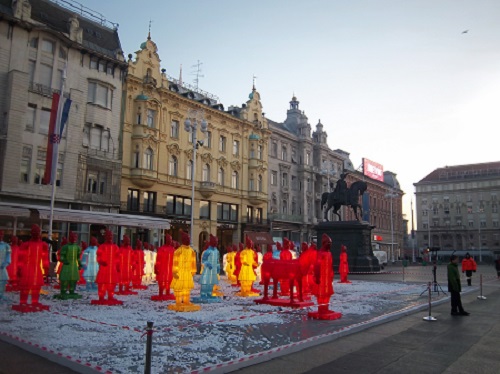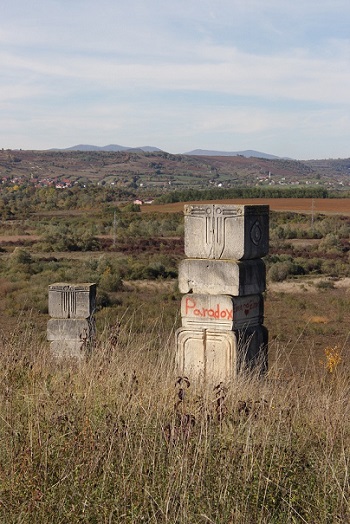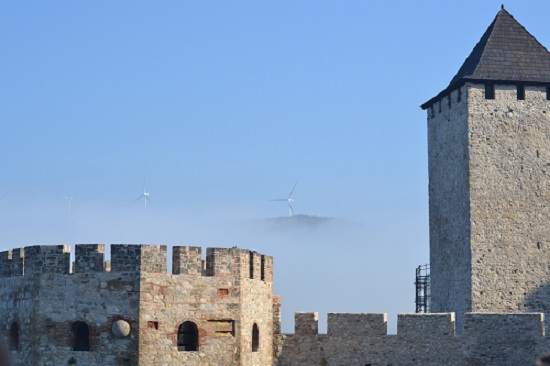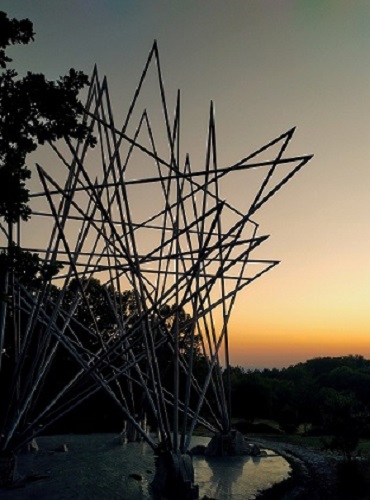Ende dieses Seitenbereichs.
Zur Übersicht der Seitenbereiche.
Beginn des Seitenbereichs: Zusatzinformationen:
Ende dieses Seitenbereichs.
Zur Übersicht der Seitenbereiche.
Programme
Beginn des Seitenbereichs: Inhalt:
Joint Master’s Programme in Southeast European Studies – We fill in the blanks!
Winning pictures of the 2022 CSEES photo contest “Landmarks of Southeastern Europe”
Anela Dumonjić, “Garavice - our pride and shame”, Garavice Hill, Bihać, Bosnia and Herzegovina
The monument, designed by Yugoslavia’s prime architect Bogdan Bogdanović, is an entire memorial park, consisting of 13 columns at the Garavice Hill in Bihać, where thousands of victims of various ethnic and religious belonging were executed during the Second World War by Ustaša forces. As in the rest of Bogdanović’s vast body of commemorative work, the architectural language of forms, shapes, ornaments and constellations is utterly devoid of any ethnic, national and religious signifiers - his is a prehistoric vocabulary.
Despite its grandeur and relevance in the 1980s, during which it was enthusiastically visited by groups of students, activists and tourists, nowadays it takes up barely any space in conversations about commemoration and the past. While its looks still spark awe and controversy in some, its historical meaning remains mostly untold, as people have learned to fear their own past.
During the fall of the socialist project in the 90s, the monument shared the same destiny as all other structures which were raised in the spirit of Yugoslavian anti-fascism, it was intentionally damaged and defaced, its meaning left in the limbo between hope for new resistance and brutal ethnonationalist terror. All columns still bear the weight of very contrasting messages until this day – daubed with graffiti that ranges from swastikas, over the hammer and sickle, to fascist and socialist paroles.
Mirko Savković, “Ban Josip Jelačić leading Terracotta Warriors”, Ban Josip Jelačić Square, Zagreb, Croatia

The photo depicts the Ban Josip Jelačić Square in Zagreb. Ban Jelačić is both a famous and controversial historical figure for his prominent role in causing the Hungarian revolution against the Habsburg Empire. The statute presents him as the leader of an army. Originally it was facing north towards Budapest. After the Second World War, the monument was removed, as Jelačić was perceived as a reactionary figure crushing a progressive Hungarian movement and the square was renamed into Republic's Square. With Croatia’s independence and rising nationalism of the 1990s, the original monument was returned to the square; but now it was turned to face the south and the town of Knin which, at the time, represented the capital of the self-proclaimed Serb parastate in Croatia. Today, the square is a scence to almost all major open air events in the city.
Michael Anranter, “Golubac Fortress”, Golubac, Serbia
Bekim Lahi, “The Star (Zvezda)”, Spomen Park Čačalica, Požarevac, Serbia”
The monument “Zvezda” (The Star) is located in the memorial park Čačalica in the Serbian middle town of Požarevac. A work of sculptor Milorad Tepavac, this monument to Freedom and Victory over Fascism has been erected in 1985 as one of the last World War II monuments in the former Yugoslavia. Although located in a well-maintained park, the monument itself lacks upkeep. With its differing design from other concrete-based Yugoslav monuments, the steel-star structure as the last monument on the top of the wavy memorial park impressed me so much that I decided to take this picture this summer in July 2022.
Ende dieses Seitenbereichs.
Zur Übersicht der Seitenbereiche.




